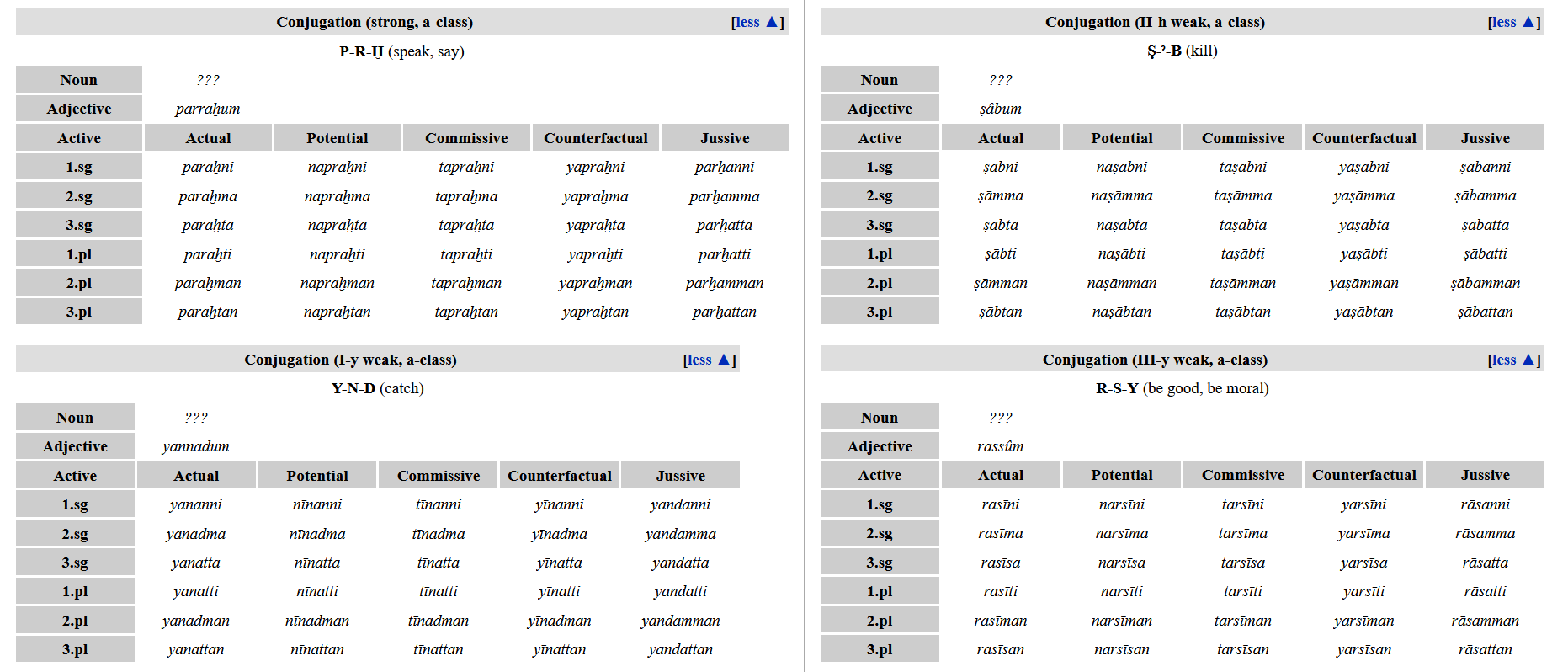I think I'll stick with marking persons with suffixes, because with my current conjugation system, it has a nice aesthetic with some verbs.

- conjugatedallverbs.png (77.06 KiB) Viewed 4570 times
But this is also why I struggle, it just doesn't feel like there's any room for additional morphemes to change grammatical voice. On the other hand, I feel limited in what morphemes to come up with because not a lot of consonants that pair well with others (which is why I have not explored infixation), not to the degree that /n t s/ do. A lot of my morphemes I make are sonorous (like nasals, liquids, and glides) and "neutral" (like coronals).
Essentially, P(V)T, T(V)P, T(V)T, T(V)K, and K(V)T categorical combinations feel ok, but P(V)K and K(V)P categorical combinations do not. So, as the root
PaRaḪ- is my conlang's
Fa'aLa, everything I come up with should be harmonious with it. But it's difficult.
Part of me just doesn't want any valence-changing operations whatsoever, but there are apparently no such languages without valence-changing operations (decreasing or increasing) morphologically or paraphrastically.
The other part of me wants to be able to do some of the kind of things Akkadian can do:
https://universaldependencies.org/akk/f ... bStem.html
Then there is coming up with morphemes or nonconcatenative morphology for the deverbals derived from verbs. And that is also where deciding on what grammatical voices I have is important.
Most importantly I think it is useful to have a deverbal that fulfills the role of action nominal, cognate object, and infinitive. After that, I need a deverbal that can modify nouns but can also stand alone as a substantive, such as a participle.
So an action deverbal and adnominal deverbal. If I have a causative voice then there must also be causative counterparts to these deverbals (because it is a derivational voice, not an inflected one). If I have a passive voice then I must also have passive counterparts. If I have both a passive and a causative voice, then my work now becomes fourfold and more difficult.
For the longest time, I've had a "pattern" of R₁aR₂R₂aR₃- which denoted the verbal adjective, conveying either a passive, resultative, or attributive sense depending on the transitivity class of the verb (active, dynamic intrasitive, and stative intransitive, repsectively).
Though I've also thought to use it to denote the causative. But if I do then I don't know how to derive a deverbal adjective from the causative derived stem because I don't want a R₁aR₂R₂aR₂R₂aR₃- pattern.
Also, if I don't have a passive voice, it feels wrong to have a deverbal adnominal with a passive sense without also a deverbal adnominal with an active sense.